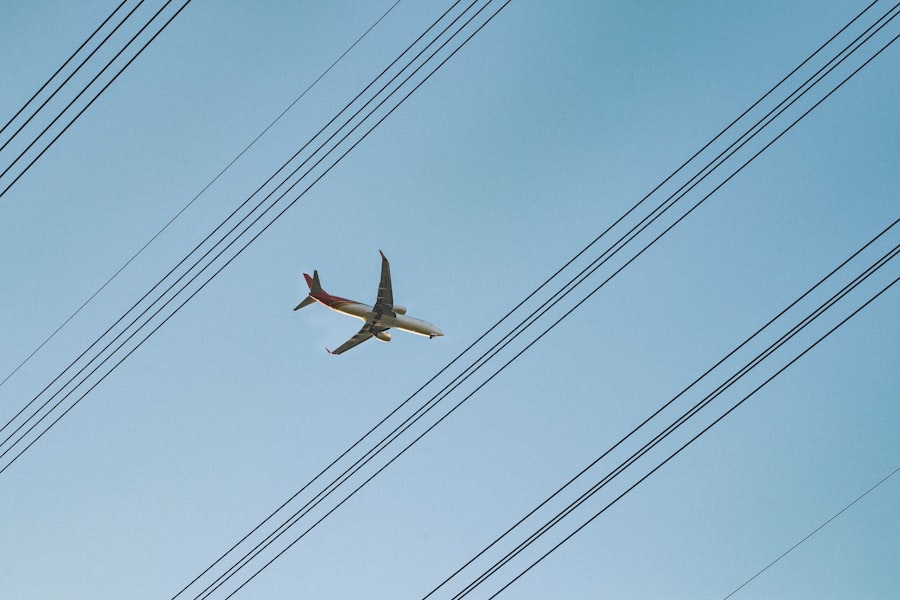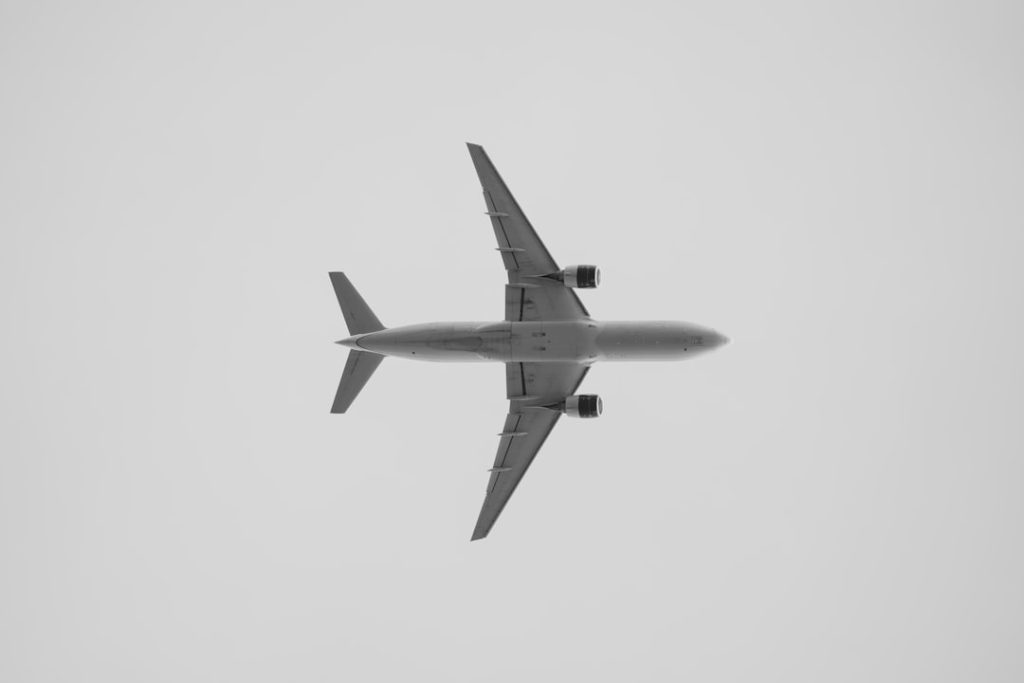Efficient aircraft tracking is a cornerstone of aviation safety, serving as a critical component in the broader framework of air traffic management. The ability to monitor an aircraft’s position, speed, and altitude in real-time is essential not only for ensuring the safety of passengers and crew but also for maintaining the integrity of airspace. In an era where air travel is more prevalent than ever, the stakes are high; millions of passengers rely on the aviation industry to transport them safely across vast distances.
Consequently, the implementation of robust tracking systems is paramount to mitigate risks associated with navigation errors, mechanical failures, and adverse weather conditions. Moreover, efficient aircraft tracking plays a vital role in emergency response scenarios. In the unfortunate event of an incident, having precise data on an aircraft’s last known position can significantly expedite search and rescue operations.
For instance, the disappearance of Malaysia Airlines Flight MH370 in 2014 highlighted the dire consequences of inadequate tracking systems. The prolonged search efforts underscored the need for enhanced tracking technologies that can provide continuous updates on an aircraft’s location, even in remote areas where traditional radar coverage is limited. This incident catalyzed discussions within the aviation community about the necessity for more reliable tracking mechanisms to ensure that such tragedies do not recur.
Key Takeaways
- Efficient aircraft tracking is crucial for ensuring safety in the aviation industry.
- Current challenges in aircraft tracking include limitations in coverage, accuracy, and real-time monitoring.
- Advanced technologies such as ADS-B, satellite tracking, and AI are enhancing aircraft tracking capabilities.
- Real-time monitoring and communication systems are essential for immediate response to any potential safety threats.
- Data analysis and predictive maintenance play a key role in enhancing aircraft tracking and safety measures.
Current Challenges in Aircraft Tracking
Despite advancements in technology, several challenges persist in the realm of aircraft tracking. One of the most significant issues is the reliance on ground-based radar systems, which can be limited by geographical constraints and are often unable to provide coverage over oceans or remote regions. This limitation can create gaps in tracking data, leaving air traffic controllers and operators without crucial information about an aircraft’s whereabouts.
Additionally, adverse weather conditions can affect radar performance, further complicating tracking efforts during critical flight phases such as takeoff and landing. Another challenge lies in the integration of various tracking systems and technologies. The aviation industry employs a multitude of tracking methods, including Automatic Dependent Surveillance–Broadcast (ADS-B), radar, and satellite-based systems.
However, these systems often operate independently, leading to inconsistencies in data and potential communication breakdowns. For example, while ADS-B provides real-time position data from aircraft equipped with transponders, it may not be universally adopted across all fleets or regions. This lack of standardization can hinder effective tracking and situational awareness, particularly in international airspace where different countries may utilize varying technologies.
Advanced Technologies for Enhanced Aircraft Tracking

The advent of advanced technologies has opened new avenues for improving aircraft tracking capabilities. Satellite-based tracking systems have emerged as a game-changer, offering global coverage that transcends the limitations of traditional radar. These systems utilize a network of satellites to receive signals from aircraft transponders, allowing for continuous monitoring regardless of geographic location.
For instance, Iridium Communications has developed a satellite-based tracking solution that provides real-time data on an aircraft’s position, speed, and altitude, even over oceans and remote areas where ground-based radar is ineffective. In addition to satellite technology, the integration of Internet of Things (IoT) devices into aircraft systems has further enhanced tracking capabilities. By equipping aircraft with sensors that collect and transmit data on various parameters—such as engine performance, fuel consumption, and environmental conditions—operators can gain valuable insights into an aircraft’s operational status.
This data not only aids in real-time tracking but also contributes to predictive maintenance efforts by identifying potential issues before they escalate into serious problems. The combination of satellite tracking and IoT technology represents a significant leap forward in ensuring that aircraft are monitored comprehensively throughout their flight paths.
Implementing Real-time Monitoring and Communication Systems
| Metrics | Data |
|---|---|
| Number of real-time monitoring systems implemented | 15 |
| Percentage increase in communication efficiency | 25% |
| Response time for critical alerts | Under 1 minute |
| Number of incidents resolved through real-time monitoring | 50 |
Real-time monitoring and communication systems are essential for effective aircraft tracking and safety management. These systems facilitate seamless communication between aircraft and ground control, enabling timely updates on flight status and any changes in operational conditions. For example, the implementation of Controller-Pilot Data Link Communications (CPDLC) allows pilots to receive instructions from air traffic controllers via text messages rather than relying solely on voice communication.
This method reduces the likelihood of miscommunication and enhances situational awareness for both pilots and controllers. Furthermore, real-time monitoring systems can integrate data from multiple sources to provide a comprehensive view of an aircraft’s operational environment. By consolidating information from radar, satellite tracking, and onboard sensors, operators can create a unified picture that enhances decision-making processes.
For instance, during adverse weather conditions, real-time data can inform pilots about potential hazards along their flight path, allowing them to make informed decisions about rerouting or altitude adjustments. This proactive approach not only improves safety but also contributes to more efficient flight operations by minimizing delays and optimizing fuel consumption.
Enhancing Data Analysis and Predictive Maintenance
The role of data analysis in aircraft tracking cannot be overstated; it is integral to enhancing safety and operational efficiency within the aviation industry. With the proliferation of data generated by modern aircraft—ranging from flight parameters to maintenance records—airlines have access to a wealth of information that can be leveraged for predictive maintenance. By employing advanced analytics and machine learning algorithms, operators can identify patterns and anomalies that may indicate potential mechanical failures or maintenance needs.
For example, airlines can analyze historical data on engine performance to predict when specific components are likely to require servicing or replacement. This proactive approach not only minimizes unscheduled maintenance events but also enhances safety by addressing potential issues before they lead to in-flight emergencies. Additionally, predictive maintenance can result in significant cost savings for airlines by optimizing maintenance schedules and reducing downtime associated with unexpected repairs.
Moreover, data analysis extends beyond maintenance; it also plays a crucial role in improving overall flight safety. By analyzing trends in flight data—such as altitude deviations or unusual speed fluctuations—operators can identify areas for improvement in pilot training programs or operational procedures. This continuous feedback loop fosters a culture of safety within airlines and contributes to the overall enhancement of aviation safety standards.
Regulatory and Industry Initiatives for Improved Aircraft Tracking

Regulatory bodies and industry organizations have recognized the critical need for improved aircraft tracking systems and have initiated various measures to address this issue. The International Civil Aviation Organization (ICAO) has established guidelines aimed at enhancing global tracking standards for commercial flights. In 2016, ICAO adopted a resolution mandating that all international flights be tracked at least once every 15 minutes during flight operations.
This initiative reflects a concerted effort to standardize tracking practices across nations and improve accountability within the aviation sector. In addition to ICAO’s efforts, individual countries have implemented their own regulations to bolster aircraft tracking capabilities. For instance, the Federal Aviation Administration (FAA) in the United States has been actively promoting the adoption of ADS-B technology among operators as part of its NextGen air traffic management initiative.
By encouraging airlines to equip their fleets with ADS-B transponders, the FAA aims to enhance situational awareness for both pilots and air traffic controllers while improving overall safety. Industry collaboration is also crucial in advancing aircraft tracking initiatives. Organizations such as the Air Transport Association (ATA) and the International Air Transport Association (IATA) have been instrumental in fostering dialogue among stakeholders regarding best practices for tracking technologies.
Through workshops, conferences, and collaborative projects, these organizations aim to share knowledge and drive innovation within the aviation community.
Integrating Aircraft Tracking with Air Traffic Management Systems
The integration of aircraft tracking systems with air traffic management (ATM) frameworks is essential for optimizing airspace utilization and enhancing safety protocols. By incorporating real-time tracking data into ATM systems, air traffic controllers can make more informed decisions regarding flight routing and separation distances between aircraft. This integration allows for dynamic adjustments based on current traffic conditions, weather patterns, and other relevant factors.
For example, when an unexpected weather front develops along a flight path, integrated ATM systems can quickly analyze real-time tracking data from multiple aircraft to determine optimal rerouting options. This capability not only minimizes delays but also enhances safety by reducing the risk of mid-air collisions or other incidents associated with adverse weather conditions. Furthermore, integrated systems can facilitate more efficient use of airspace by enabling closer coordination between different sectors of air traffic control.
Additionally, integrating aircraft tracking with ATM systems supports collaborative decision-making among stakeholders within the aviation ecosystem. By sharing real-time data across various platforms—such as airlines, airports, and air traffic control—stakeholders can work together to optimize flight schedules and improve overall operational efficiency. This collaborative approach fosters a culture of transparency within the industry while enhancing safety outcomes through improved situational awareness.
Future Trends in Aircraft Tracking for Enhanced Safety
As technology continues to evolve at a rapid pace, several trends are emerging that promise to further enhance aircraft tracking capabilities in the future. One notable trend is the increasing reliance on artificial intelligence (AI) and machine learning algorithms to process vast amounts of data generated by modern aircraft systems. These technologies can analyze complex datasets in real-time, identifying patterns that may not be immediately apparent to human operators.
As AI becomes more integrated into aircraft tracking systems, it has the potential to revolutionize how safety risks are assessed and managed. Another trend is the growing emphasis on cybersecurity within aircraft tracking systems. As reliance on digital technologies increases, so does the vulnerability to cyber threats that could compromise tracking data integrity or disrupt communication channels between aircraft and ground control.
The aviation industry is beginning to prioritize cybersecurity measures to safeguard sensitive information and ensure that tracking systems remain resilient against potential attacks. Furthermore, advancements in blockchain technology may offer innovative solutions for enhancing transparency and accountability within aircraft tracking processes. By creating immutable records of flight data that can be securely shared among stakeholders, blockchain could facilitate more efficient collaboration while reducing the risk of data tampering or fraud.
In conclusion, as we look toward the future of aviation safety, it is clear that efficient aircraft tracking will remain a critical focus area for industry stakeholders. Through continued investment in advanced technologies, regulatory initiatives, and collaborative efforts among various entities within the aviation ecosystem, we can work towards a safer and more efficient air travel experience for all.


